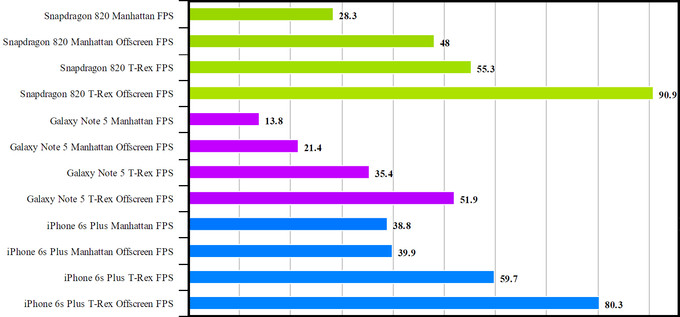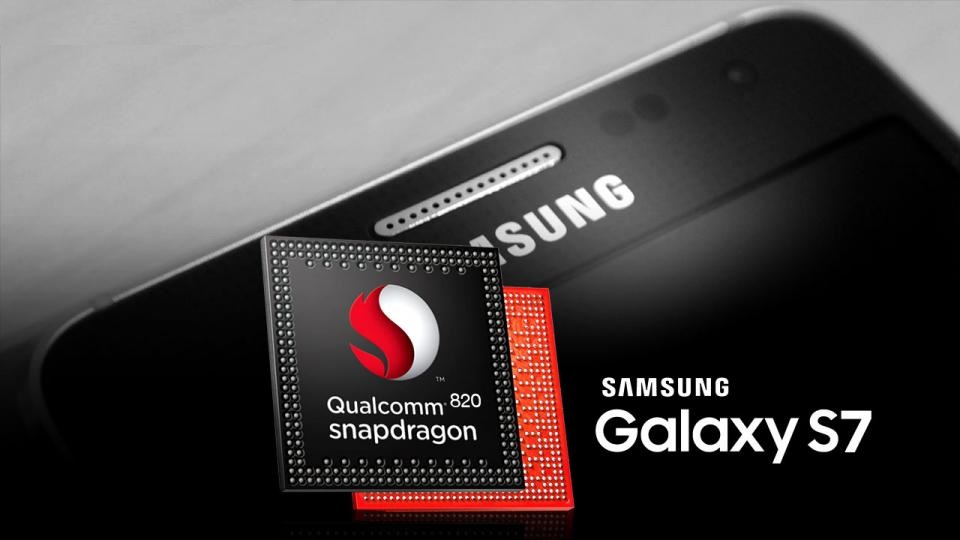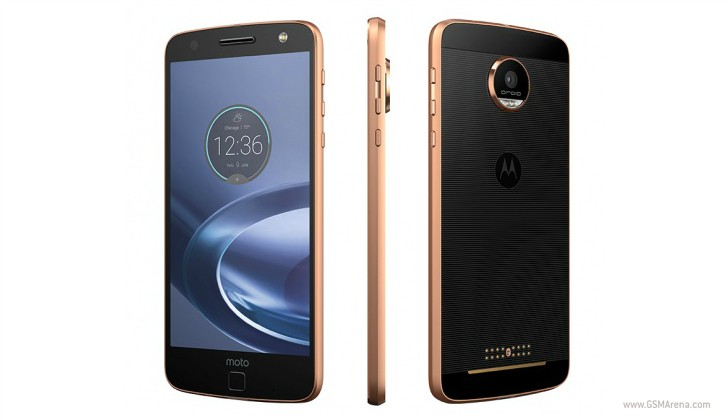Search result

The Desire 820 was released back in 2014 and it's good to see that HTC has not abandoned it yet. The smartphone just started to receive an update package Over The Air which will not only bring Android 6.0.1 to the smartphone, but will also upgrade the Sense UI to v7.0, post installation. This is good news but we are not yet sure as to which regions the update is covering at this moment. In fact, the news came as quite a surprise and was reported first by GSM Arena after being tipped off by Rupak Thapa.
If you are using a HTC Desire 820 and have not been notified about the update yet, check for it manually. Go to Settings, tap on About device at the bottom and just select Check for updates. If the results are negative and you do not see a prompt to update your handset, there is still no need to fret. OTA updates are always rolled out in phases, meaning that all HTC Desire 820 smartphones cannot receive the update at the same time. Nonetheless, it only takes a few days before all the phases begin to roll out so just keep checking.
Author: Saikat Kar (Tech-journalist and enthusiast)

HTC has announced the latest member of their Desire family. The new HTC Desire 820 is the successor to the popular Desire 816 and is the second HTC phone to have a 64-bit processor.

The Desire 820 is the first phone to run on the new Qualcomm Snapdragon 615 (MSM8939), which has an octa-core CPU with eight Cortex-A53 cores, four of them clocked at 1.5GHz and four at 1.0GHz, along with Adreno 405 GPU. The SoC is based on the 64-bit architecture and HTC will update the phone to Android L, which is designed to take advantage of 64-bit processing.
HTC Desire 820 Full Specifications
The Desire 820 also has a 5.5-inch, 1280x720px display, 13 megapixel rear camera, 8 megapixel front camera, and BoomSound speakers. The phone will offer Cat 4 LTE connectivity.

Looks like HTC will bring its Mid-range 64-bit Smartphone first, before it high end 64-bit (if any). HTC has officially announced that it's first 64-bit smartphone will be the mid-range Desire 820.
This has been officially confirmed via the HTC Weibo account though details are very scarce all the teaser images really say is "64-bit" and "September,4th". The first image lists off the HTC firsts first Android phone, first 1080p phone, first f/2.0 camera aperture and so on.

The second image is more interesting and shows what appears to be the front-facing camera, off to the side of a front-facing speaker grill. Our Chinese is spotty but that big "64" is hard to misinterpret.
The short text accompanying the second teaser image claims this is the "world's first octa-core 64-bit phone". If it's a Qualcomm chipset then it must be the Snapdragon 615 - it has eight Cortex-A53 cores (the 64-bit replacement of the Cortex-A7) and a next-gen Adreno 405 GPU.
Source (China)

Following the Qualcomm Snapdragon 810 which suffered from initial reports out of Korea's Samsung about overheating in early mock-ups causing a delay in the release of one of their flagship phones, the Snapdragon 820 is expected to re-establish Qualcomm's leadership position in mobile-specific microchips.

Samsung develops its own Exynos range of SoC that it puts into model variants, particularly in Asian markets, which it used when Qualcomm came up short with the 810. The Galaxy S6, S6 edge, S6 edge+ and Note 5 all used Samsung's over SoC instead of Qualcomm. However, the latter chip-maker is roaring back with its upcoming 820.

Leaked benchmark scores for both Geekbench and AnTuTu indicate that the Snapdragon 820 is likely to outperform the collection of competitors with their best 2015 releases. The benchmark scores beat the Note 5 and even matched the iPhone 6S Plus in some off-screen tests while lagging a little with the on-screen ones.
The test screenshots refer to the SD820 being used on a 6.2-inch smartphone with an eye-gouging 1600x2560 resolution with 4 GB of RAM. Clearly the 820 was being pushed hard with the sheer number of pixels being moved around on the screen during the testing on the Android 6.0 platform. In fact, the number of pixels being managed on-screen far exceeds that of the iPhone S6 Plus which likely explains the on-screen under-performance compared to the Apple model.
LeTV announced the Le Max Pro will use the 820, but Samsung is also expected to release details about the Galaxy S7 in a couple of weeks which is likely to adopt the new Qualcomm technology in some of its phone variants.

A New Galaxy flagship is coming along with a new set of leaks roo. Some leaked documents from Samsung HQ in Korea showed that the company is currently in the middle testing stages of the Galaxy S7.
Codenamed "Jungfrau" the Galaxy S7 might see a month or two faster development schedule than the Galaxy S6, courtesy of an improved project management process, dubbed "Agile." This could very well jibe with the previous rumors that Galaxy S7 will be ready in the second half of the year, though it might not exactly hit the shelves in time for Christmas, but rather be announced earlier than usual when 2016 hits.

Samsung Galaxy S7 will be packing the latest Snapdragon 820 and running Google's upcoming Android M release. However, The Korean giant is still developing a firmware build with Android M v5.2 for the S7 based on the latest developer previews (Google didn't release the final M version, yet).
.jpg)
More leaks are coming our way, So stay tuned and follow our News!

A couple of weeks ago, a report from the South Korean media claimed that Samsung is considering the launch of two separate Galaxy S7 versions, one that will be based on Samsung's successor to the Exynos 7420, and one that will rock the Qualcomm Snapdragon 820. According to a new rumor, Samsung has expanded the team of engineers that are working on optimizing the Qualcomm Snapdragon 820 chipset for use on the upcoming Samsung Galaxy S7.
One new detail that was brought forward today by the source is that Samsung is the first manufacturer that gets access to Snapdragon 820 testing samples. Now, such a development would seem to indicate that Samsung has secured orders for manufacturing the Qualcomm Snapdragon 820 on its 14nm FinFET technology, as was previously rumored. However, this is some reading between the lines on our part, and not info coming from the source of this rumor.

After dropping the ball with the Snapdragon 810, a chip that was plagued by poor thermal performance, Qualcomm has a lot riding on the Snapdragon 820. Although the chipmaker has yet to announce all of the hardware details, Qualcomm has already revealed that its upcoming high-end chip will come with a custom CPU architecture, an Adreno 530 GPU that's said to be 40% faster than the Adreno 430 inside the Snapdragon 810, a new DSP chip, as well as built-in malware protection.

Xiaomi's Mi 5 flagship smartphone whose launch was delayed, will now launch some time after the Chinese New Year in February, as per a post made in social media by the company's cofounder, Liwan Jiang, on Wednesday. He also revealed that the Mi 5 will be powered by a Qualcomm Snapdragon 820.
Xiaomi phone enthusiasts were disheartened in November when the Chinese smartphone manufacturer pushed new set of devices into the market - the Redmi Note 3 and Mi Pad 2. They also made it official that there won't be any more new device related announcements in 2015. Qualcomm was at the receiving end for this delay.
According to various reports the Snapdragon 820 is supposed to be much better than the troublesome Snapdragon 810, which affected several of 2015's major smartphones. The Mi 5 will be backed by 4 GB of RAM and have 32 GB and 64 GB variants. Other speculations about the Mi 5 include full metal body, fingerprint scanner, QHD display, a 16 MP primary snapper and massive 13 MP camera in the front along with a powerful 3,600 mAh battery featuring Qualcomm's Quick Charge 3.0 standard.
The Mi 5 is expected to have a 5.2-inch display, encompassing a huge 565 ppi. As per Previously leaked price details, the smartphone will be available at $310 and $390 US dollars. But these prices are not yet official. .

It wasn't LeTV, but Qualcomm who revealed the upcoming LeTV Le Max Pro as the first Snapdragon 820 powered smartphone. At the Consumer Electronics Show (CES) 2016 in Las Vegas, Qualcomm made two major announcements with the first being an introduction to the automotive Snapdragon 820 chipset, termed "820Am." Apart from helping the driver with real time assistance in navigation and performing other "smartcar" functions, the Snapdragon 820 Am will also enable movement-tracking when supported by appropriate hardware sensors.
The 820 is actually a quad core processor wherein last year's 810 was an octacore CPU. There are four Kryo processor cores inside the CPU and each one is clocked at 2.2 GHz by default. Apart from the Snapdragon 820 processor, the LeTV Le Max Pro will be powered by an Adreno 530 GPU and 4GB of RAM.
The extremely well-built Le Max Pro will offer three non-expandable storage options; 32GB, 64GB and 128GB. The enormous 6.33 inch 1440p display is beautiful to look at and perfect for consuming media, albeit a little too large for smaller hands. A 21 megapixel camera and an ultrasonic fingerprint scanner further add to the repertoire of the most powerful phone announced so far (theoretically). We will just have to wait and see if such a huge 2k display and the Snapdragon 820 SoC proves to be too much for the 3400 mAh battery housed within.

Qualcomm's 2015 roadmap has been leaked, the company is working on improving its Snapdragon processor that will run the best device of 2015. The star of the H2 2015 show is the successor to the current Snapdragon 810 system chip: the Snapdragon 820.
Alleged specifications for the upcoming system chip show two key advancements: a quick transition to 14nm FinFet manufacturing at Samsung and GlobalFoundries fabs, and the roll-out of what seems like the first custom Qualcomm 64-bit CPU cores under the Taipan architecture.

Qualcomm has dominated the market in the past three years with its Snapdragon chips featuring Krait CPU cores found in most major flagships, but the need for a quick transition to 64-bit chips coincided with the end of life for Krait, forcing the company to release the Snapdragon 810 without its own custom core. The Snapdragon 820 is expected to feature an octa-core setup with eight TS2 high-performance cores.
Other Snapdragon 820 features include a new Adreno 530 GPU, support for the faster LPDDR4 RAM, as well as a advanced MDM9X55 LTE-A Cat.10 Qualcomm modem.

At MWC 2015, Qualcomm just officially announced the Snapdragon 820 Soc (System-on-chip). The chipset will be built on a FinFET manufacturing process, but Qualcomm didn't specify if this means TSMC's 16nm or Samsung's 14nm tech will be used the SD 820.
The star of the Snapdragon 820 chip, which debuts Qualcomm's Zeroth platform. It promises to be a cognitive computing platform, which means that it can anticipate users needs and actions in advance. One real-life application of the platform as demoed on stage is a camera recognizing the subject of the photo.

Inside the chip Qualcomm's custom ARMv8 CPU core also makes a first appearance. Dubbed Kryo, it sports 64-bit architecture, but at this point there aren't any more details regarding it.
Qualcomm says it will start sampling the Snapdragon 820 in the second half of 2015. This leaves us to anticipate the first devices rocking the chip early 2016. Expect more information about the Snapdragon 820 as it becomes available.

We've all heard the stories and the explanations, promises and let downs surrounding the Snapdragon 810. The whole overheating saga has entirely engulfed the existence of the beastly SoC and has rendered it a major market failure. The drama still rages on, especially since a few unlucky upcoming devices, like the OnePlus 2 are still set to incorporate the troublesome chip, but Qualcomm seems to be cutting its losses and moving forward.
The next major step, of course, is the Snapdragon 820, which initially got announced at MWC 2015. It promises cutting edge performance and far better handling of overheating and throttling, a lesson which the manufacturer had to learn the hard way. Since then, news has mostly died out and the chip sunk into the realm of rumors. There were even talks of a sibling, dubbed the Snapdragon 815, but that was quickly denied.

The Snapdragon 820, however, is still on its way and a new report shows that it might be closer to consumer markets than ever. According to industry sources, an initial batch of chips has already been sent to a customer for testing. If everything pans out, we might start seeing the chipset in various devices shortly after.

Android's Stagefright vulnerability was so serious it had phone makers pledging left and right that they will provide security updates for their handsets. Clearly mobile security is important and Qualcomm wants to enable it at the hardware level with Snapdragon 820 and the new feature called "Smart Protect".
Based on Qualcomm's Zeroth machine learning platform, Smart Protect will keep an eye out for abnormal app behavior in real time (and with little power usage). The platform will help move much of malware detection from the cloud onto the device.

Qualcomm will provide software that will protect user data and privacy, but third-party apps can also hook up to Smart Protect - Avast, AVG and Lookout are working to integrate the new feature into their mobile apps.
Highlights of Snapdragon Smart Protect
• Personal Protection – Snapdragon Smart Protect provides robust security and enhanced personal privacy for today’s mobile environment, empowering end users with greater control over personal data and by detecting and classifying spyware, adware and other malicious app behavior.
• Superior Behavioral Analysis – Using Qualcomm Zeroth cognitive computing technology, Snapdragon Smart Protect enables OEMs and mobile security solution providers to enhance anti-malware and privacy protection services with real-time, behavioral-based machine learning that is designed to detect and classify zero-day and transformational malware.
• Power- efficient performance – Snapdragon Smart Protect offers optimal performance through on-device design and uniquely deep access to hardware and software of the Qualcomm Snapdragon 820 processor, enabling malware detection and critical data processing on the device, rather than in the cloud.

Qualcomm just released more details about its upcoming Snapdragon 820 Soc that will be included on all 2016 flagships devices starting by the ned of this year.
A major missing puzzle piece was connectivity and at today's Qualcomm event in China it became clear that the Snapdragon 820 will offer top-notch mobile data bandwidth up to 600Mbps downstream and 150Mbps up over LTE-Advanced (X12 LTE). Also Wi-Fi 802.11ad will be supported for next-gen local connectivity.

The Snapdragon 820 will use four custom 64-bit Kryo cores, so no more standard Cortex solutions. The Kryo processor has been manufactured via Samsung's 14nm FinFET process, so it promises to go easy on the battery as well. And speaking of the Korean tech giant, rumors hint that it is already busy testing the Snapdragon 820 for integration inside the next Galaxy S7 flagship.
The company also confirmed that the new chips will support its latest Quick Charge 3.0 standard. The technology claims to be 27% faster that version 2.0, while using less power will help preserving the health of the battery pack longer. More details are coming, stay tuned.

Lenovo has just unleashed a brand new series, which will replace the Moto X series of smartphones, starting from 2016. Both the phones in the new Z-series will come with top tier specs like a SD 820 CPU, a 5.5-inch QHD panel, 4GB of RAM and even the choice for 32GB/64GB in-built storage (along with expandable SD card slots). The regular Moto Z will sport a 13-megapixel rear sensor with laser autofocus, optical image stabilization and a dual tone LED flash for pitch dark conditions. On the front, there's the 5-megapixel snapper with a dedicated selfie-flash and a wide angle lens for group selfies. All this will be powered by the Quick charging 2,600mAh battery inside the Z.
The Moto Z Force has the bigger 3,500mAh battery and a shatterproof glass on the front. Lenovo calls the glass "ShatterShield" and they are confident that it cannot be broken by even the roughest of falls. The thicker and more premium device also features a higher resolution 21-megapixel sensor with phase detection laser autofocus, optical image stabilization and an aperture of f/1.8 for low-light photography. In spite of the flagship specs, what we did not like is the missing headphone jack that we have grown accustomed to. Although an USB Type-C to headphone adapter is included in the box, it means that you cannot simultaneously use the Type-C port for charging or data syncing, while listening to the headphones.

In addition to the missing 3.5mm jack, the two Moto phones also bring something else that the market is just getting accustomed to. Both phones have 16 magnetic dots at the lower-back area and they are equipped to connect with the "Moto Mods." Similar to what we saw with the LG G5 modular phone that was released earlier this year, the Moto Mods are modular accessories created specifically for the Moto Z smartphones to enhance the device's already impressive capabilities. There's the InstaShare Projector mod and some stylish case mods, but we found the JBL Soundboost mod to be the most impressive with its twin 3W speakers and a 1,000 mAh battery to boost the phone's usage time.

As is evident, the Moto Z and the Moto Z Force has a LOT to offer, but you will have to wait till September to get your hands on one, if you are outside the US. Verizon in the US however, will release their "Droid Editions" sooner.
Author: Saikat Kar (tech-enthusiast)
© 2023 YouMobile Inc. All rights reserved





